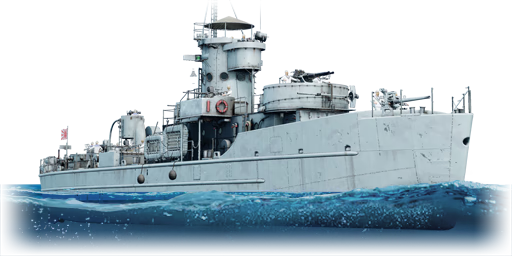Laid down in 1944 as American Landing Craft Support LCS(L)(3)-9, Asagao started its career in the Asia-Pacific, delivering supplies to Filipino guerrillas and harassing Japanese targets in the region. With the end of the war, the ship was placed in reserve and renamed LSSL-9. In 1950, LSSL-9 was assigned to France, where she was named RFS Hallebarde (L-9023), but she returned to the United States by 1955.
However, in 1956, along with a batch of fifty other LSSLs, the vessel was transferred to the Japan Self-Defense Force, where the batch was reclassified as the Yuri-class of patrol ships and the vessel was given a new name: JDS Asagao (あさがお), after the flower morning glory (family Convolvulaceae). Her service in the JSDF was entirely uneventful, being used as a training vessel before returning back to the US Navy in April 1965. The ship was then leased to South Vietnam in September 1965 as RVNS Đoàn Ngọc Tang (HQ-228), but with the fall of South Vietnam in 1975, she escaped to the Philippines, where she was loaned to the local government and remained under the name RPS La Union (LF-50) until her decommissioning in the 1980s.
The Asagao (YTE-01) was introduced in Update "Air Superiority". In combat, she can outgun most motor torpedo boats and other light vessels, while also being a good anti-air platform. However, her low speed and mediocre survivability make her struggle with frigates and other high-BR vessels. She's a relatively large vessel with an unusually low draft, making her able to reach locations more typically accessible to the torpedo boats, with which she also shares spawn points. Her unique feature, compared to the other LCS's, is a rank III modification enabling the use of 120 Mk7 barrage rockets.














